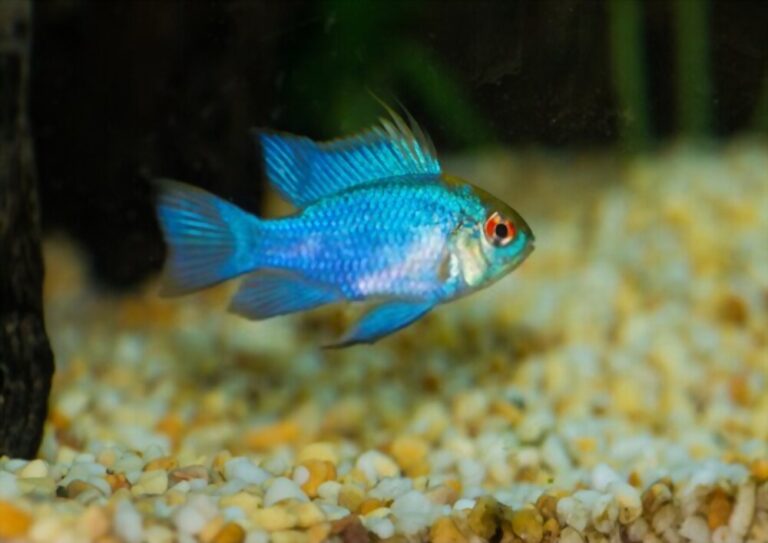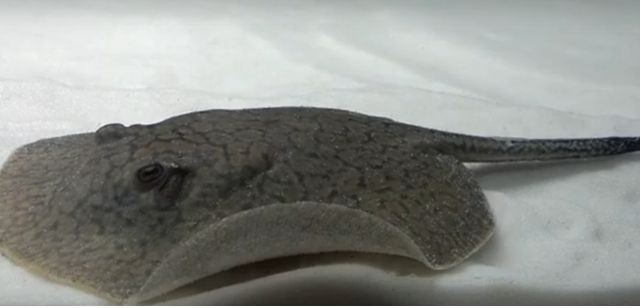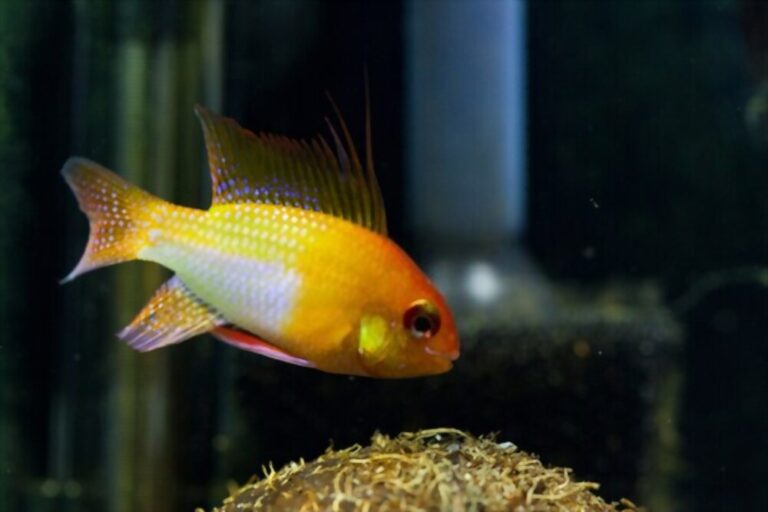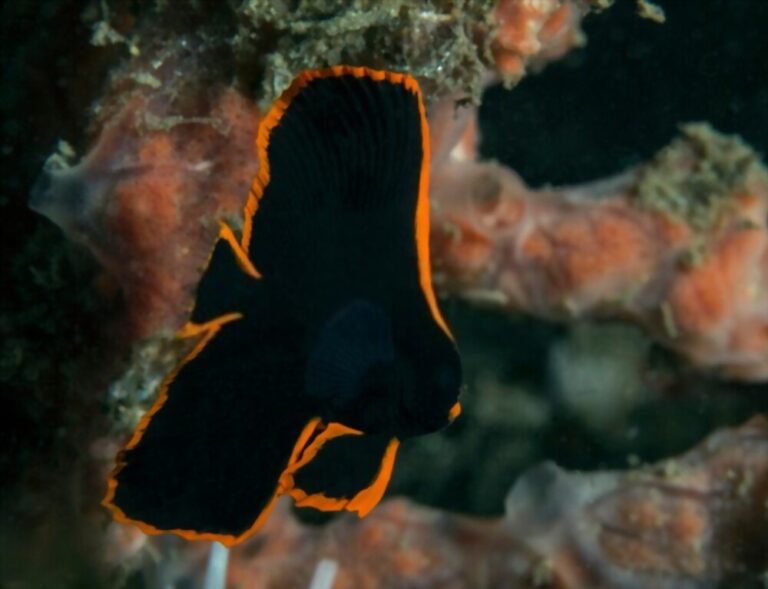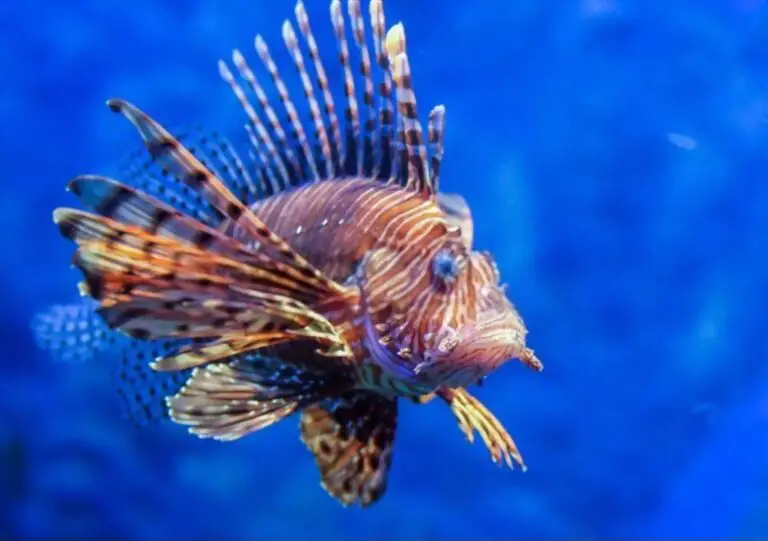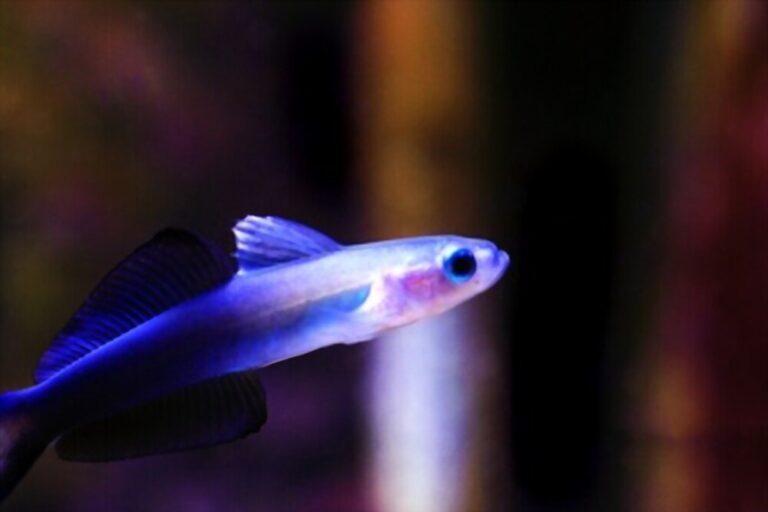Marble Angelfish Care Guide – Size, Lifespan, Breeding, Tank Mates, Diet
Marble angelfish is a freshwater angelfish, and it is thought to be one of the bred varieties of the Pterophyllum scalare. It is commonly called silver angelfish by the aquarists.
All of the freshwater angelfish species fall in the same genus, ‘the pterophyllum’. They are geographically distributed over a wide range of rivers in South America, including the Amazon river basin and its branches.
Marble Angelfish Size & Appearance
The cichlid belongs to the group of angelfish species. This cichlid can gain massive heights due to the oversized dorsal and anal fins that grow past their body’s length.
They gain a maximum length of 6 inches with their heights, measuring from the dorsal fin’s tip to the end of the anal fin and reaching up to 8-10 inches. The veil species can gain much longer heights because of their massively long fins.
Silver angelfish (Pterophyllum scalare) is the main angelfish when all of its varieties are compared. They have the same body composition features but vary in coloration and markings. Silver angelfish have silver bodies with black stripes that run vertically.
The marble angelfish show further variations in coloration patterns, and thus they have been divided into three subcategories named Gold marble angelfish, Black marble angelfish, and Blue marble angelfish.
Gold varieties of marble angelfish have black-white but mostly gold colors, while black marble has more blackish colors and markings. But blue marble has more of a blue tint.
Different Species of Marble Angelfish
There are many variations in Pterophyllum scalare. This is the result of their breeding and interbreeding with other species of the Pterophyllum genus.
One of the results of this inbreeding is marble angelfish. But there is further variation in the marble angelfish based on the pattern of their colorations and markings.
They all have compact bodies that are pressed laterally, giving them an overall diamond-like shape. There are three species of marbles, which are mentioned below.
| Species Name | Appearance |
|---|---|
| Black marble angelfish | This variety has more of black color with a little white and silvery tint. |
| Gold marble angelfish | It has a bright goldish color with little retention of black and white random stripes or spots. |
| Blue marble angelfish | This variety has a bluish body with shades of white and mixed black spots. |
Marble Angelfish Male & Female
Identifying and distinguishing between the male and female marble angelfish is not something that can easily be done.
It takes a lot of experience and an expert eye to point out the differences which are not noticeable for beginners or ordinary people. Once they get matured, only then one can identify their sexuality, but that wouldn’t be easy either.
If the tank conditions are right, then it takes 5 to 7 months for them to get matured. Here are some physically apparent hints which can be used to determine their sexes.
- The male marble angelfish are larger than the females and have circular bodies, while the females have small bodies making somewhat of an angular appearance and not completely round.
- The males have thick bumpy, and abrupt forehead with a notable crown-like appearance, which becomes noticeable when they mature. The females have rounded heads with no bump.
- The males have split or diverged front fin while the females have smooth front fin.
- On getting matured, they develop spawning tube-like appendages on their bellies just near the feeler fins. The males’ tubes would be sharp and pointed, while the female’s tubes would be shallow, blunt, and non-pointed.
The Lifespan of Marble Angelfish
The average lifespan of Marble angelfish is 10 years. However, they can live up to a maximum life of 15 or so years if properly cared for.
The Scalare fish and its varieties are very hardy. They show better resistance towards the fluctuations of conditions than their closely related Altum angelfishes.
It is also because the freshwater angelfishes that we generally find in aquariums are captive inbred, and they can easily get acclimated to the tank.
Despite being hardy, they still have some requirements to do well in the tank. It would be best to ignore the caring measures by getting satisfied with their resistive capabilities.
The nitrates level can prove to be fatal if they exceed the limits. By monitoring the water conditions, making water changes regularly, and making sure that the tank is not overcrowded, you can ensure your acquisition’s maximum lifespan.
Marble Angelfish Care
Marble angelfish belongs to one of the varieties of Scalare fish, which are the fish that are equally popular and safe in the hands of both experts and beginners.
Dwarf Angelfish Care Guide (Size, Reef Safe, Diet, tank requirements)
Caring for the Scalare varieties is very much easy as compared to the Altum angelfish. But that does not mean they don’t require any specific caring measure. Well, they are living beings, and they do require caring.
Water conditions are the most important key factor in caring for the marble angelfish. Maintaining the water conditions correctly and ensures the good health and well-being of marble angelfish.
- They require a warmer aquarium with a temperature range of 24-38 degrees Celsius.
- As they are freshwater fish, they need soft water with hardness ranging from 2-10 dGH.
- They do best in a slightly acidic environment. The pH range in which they perform well is 6-7.
- In their natural habitat, they inhabit areas with moderate water current. Therefore, water movements should be kept moderate in the tank.
- They are not choosy when it comes to a substrate. But a mixed substrate of sand and gravel is best.
- They also need dim light as they live around vegetation in the wild, where there is a dimmer level of sunlight.
Food & Diet for Marble Angels
The marble angelfish are omnivorous feeders. They feed on the small crustaceans, larvae, insects, and other small fishes of their compatible eating size in the wild.
They occasionally eat the grassy weed as well, which fulfills their nutritional requirements for the natural fibers.
In the aquarium, their diet should mostly and mainly consist of proteinaceous food. They readily accept any life as well as frozen foods.
Shrimps, including Mysis shrimp, vitamin-enriched brine, and bloodworms, account for a treat for them. To maintain a balanced nutritious diet, the prepared food for carnivores, pellets, and high-quality flake foods must be included in their everyday diet.
Mosquito larvae are the delicious favorites of marble angelfish, and they tend to overfeed on them. Therefore you must offer them sparingly.
Breeding Marble Angelfish
Breeding of the South American freshwater angelfish is on a commercial level. Most of the cichlid angelfishes that we see in the aquarium today are captive inbred and scarcely wild-caught.
The marble angelfish is also an inbred variety of the Pterophyllum scalare. Therefore, all the functional features of marble angelfish are the same as the silver angelfish, and breeding instincts are of no exception as well.
South American freshwater angelfishes naturally make nuclear families upon pairing up. A nuclear family in terms of breeding is a family of a male and a female with many or no children.
They reach the age of maturity somewhere between 6 to 12 months of age, and it depends upon the conditions of the tank. As mentioned previously, they can reach maturity from 5-7 years of age if the conditions are correct.
Temperature & Condition For Breeding
These fish prefer clean and clear water to spawn. Even if they pair up and the water is not clean, they won’t spawn. Moreover, a balanced diet with high protein content would also be favorable.
Water conditions play a very crucial role to trigger their spawning. The spawning water should be warmer and more acidic than normal water. Here are the spawning conditions mentioned below.
- Temperature: (27 – 29 ° C)
- The pH of the water: About 6.5
- Hardness: 5 dGH
After all the breeding conditions are appropriately met, then the spawning will start. The female fish would lay hundreds of eggs, usually ranging from 100 to 1000 on some flat surface like submerged broadleaf or branches.
The male would then follow the female and fertilize the eggs. Now here is another problem. Over the years, a continuous commercial inbreeding of these fish has almost destroyed their instinctive property to guard the eggs.
They can eat their eggs. To prevent this, you need to provide a spawning surface like a shallow cup or plate-like thing, which can later be removed and hatched separately.
Marble Angelfish Tank
These angelfishes have their requirements for the size of the tank in which they will be housed. They need an aquarium that offers plenty of swimming and hiding spaces and has significantly considerable depth.
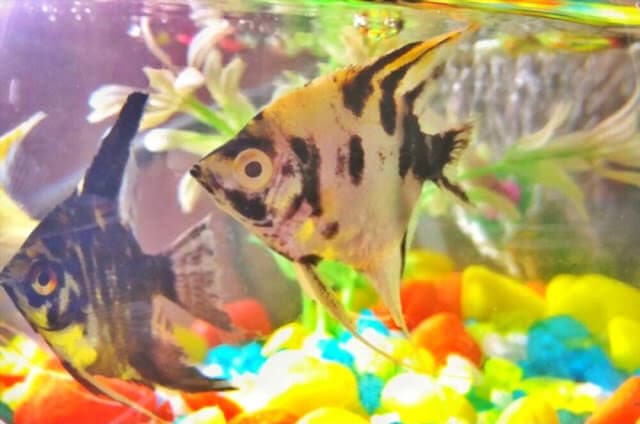
The minimum tank size recommended for the single specimen of marble angelfish is 30 gallons. For a pair, a 55-gallon tank can offer a satisfying amount of space.
The need for the large and, most importantly, the deep aquarium is because of their long dorsal and anal fins, which form wings like appearance. Therefore, you should prefer the depth of the tank over its length.
Tank Setup
The main and basic point to be noted in setting up their tank is to provide them with the best possible environment, which makes them feel at home. As we already noted previously that depth should be preferred over length.
A perfect angelfish aquarium would have length, width, and depth, all in an optimal proportion. Let’s keep things simple.
The tank should be provided with the plants with submerged leaves or expanded dense branches around inside peripheries. The rocky formations that make up crevices must be included and firmly glued on with the substrate.
Branches of the plants and crevices serve as hiding and resting places. The Center of the tank should be an open area for swimming.
You should install An efficient filtration system for carrying out all types of necessary filtration. Filtration of the water is necessary for preventing the accumulation of nitrates and other toxins.
As far as the tank’s bottom is concerned, provide the substratum, which can anchor the plant roots and hook the rockwork firmly. A mixed substrate of sand gravels is suitable.
The marble angels like dim lights. You can install a lighting system on the roof of the aquarium.
Tank Mates for Marble Angelfish
The cichlid angelfishes come from the streams of slow-moving waters and flood plains, which are densely grown with underwater vegetation. Thus, home to many angelfish as well as other species of fish.
Although they share a diverse habitat with a diverse group of species, confining them in a limited tank’s limited space is a different story.
Selecting tank mates for them is not an easy thing. You need to understand the possible behavioral fluctuations that they can demonstrate towards other species.
As we noted previously, these fishes form strong nuclear families. The males cannot bear another male’s presence within their territory, and they will fight until death.
Therefore you must keep singly or in pairs. Here is the general rule of thumb for selecting the tank mates for marble angelfish
- Peaceful fish: Be careful in housing any timid fish with the marble angelfish and especially if the fish is too small to fit its mouth.
- Semi-Aggressive fish: While housing semi-aggressive fish with the marble angelfish, make sure to have a large tank with plenty of open and hiding areas. Monitor the tank carefully because the marble angelfish’s long fins can stimulate the hunting instinct of the other fish.
- Aggressive fish: The aggressive predatory fish can hunt down your marble angelfish. It is not recommended at all to house them together.
Here are few species which can be excellent tank mates for marble angelfish
- Dwarf Gouramis
- Freshwater Catfish
- Bolivian rams
- German rams (you must monitor as they fragile)
- Bottom-dwelling Khuli loaches.
- Mollies
- Platies
- Juvenile common plecos (become very aggressive after getting matured)
Are Marble Angelfish Aggressive?
Although these fish can be regarded as community fish and their behavior is dependent on what tankmates they are put together with.
They are peaceful when they are still underage, but instinctively they tend to pair up upon getting matured and develop territorial aggression. So, they are aggressive to the same species members, which they think threatens their territory.
Moreover, they also show aggression to the other peaceful species, and if they are of their compatible eating size, they hunt them down. So, avoid keeping the small precious peaceful acquisitions in the same tank with the marble angelfish.
Where can I buy marble angelfish?
The captive breeding of freshwater angelfish species is a hot business, and mostly the angelfishes available in the market today. Marble angelfish is a fixed form of silver angelfish that is readily available in fish stores and can be bought online.
Final Words
The freshwater angelfishes are a very diverse group of species belonging to a very diverse family known as the cichlid family.
The species belonging to the genus pterophyllum and are genetically very closely related to each other. It is widespread to interbreed them, and the process is called captive inbreeding. There are three described and several undescribed species belonging to the genus pterophyllum.
The captive inbreeding of pterophyllum Scalare, a very common angelfish, results in a further diversity of freshwater angelfish in the aquarium trade.
Almost all of the freshwater angels that we see in the aquarium trade today are inbred. Marble angelfish is one of the best-known varieties of inbred angelfishes. Marble angelfish is further classified into black, blue, and gold varieties.
